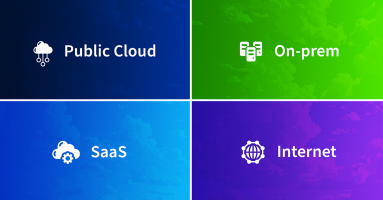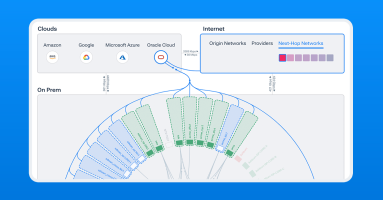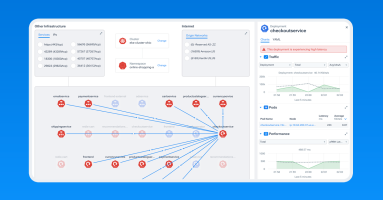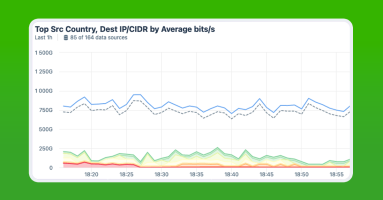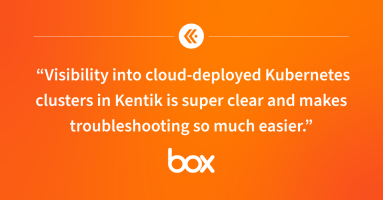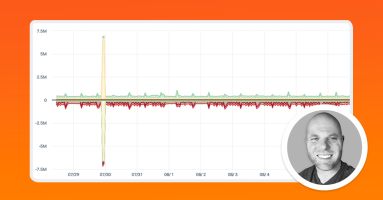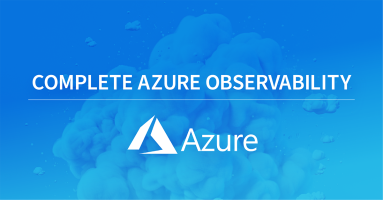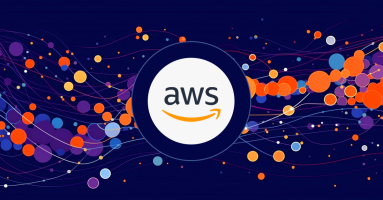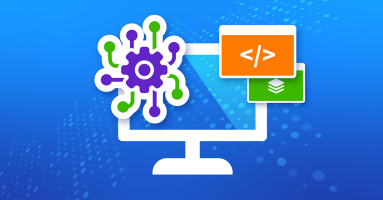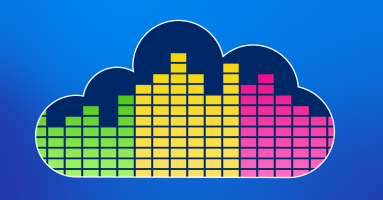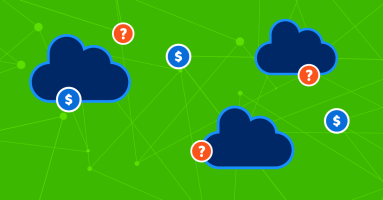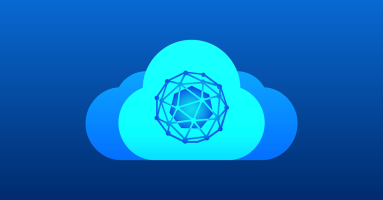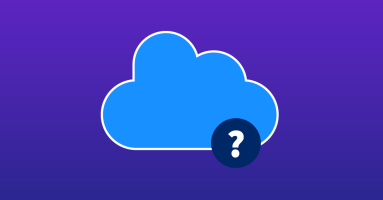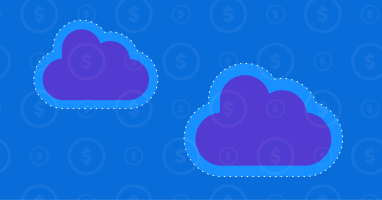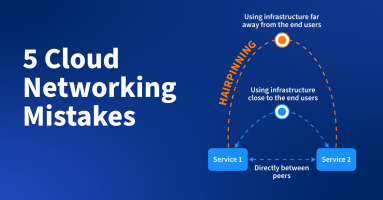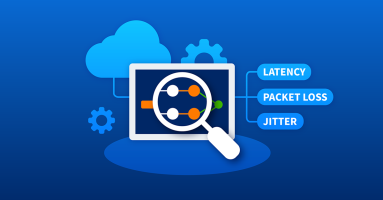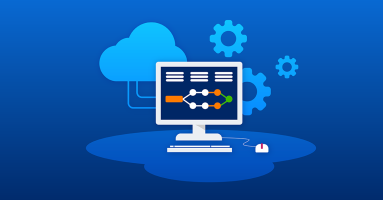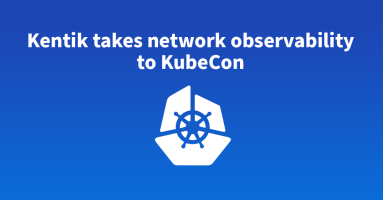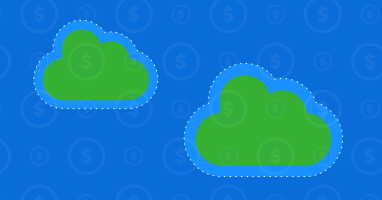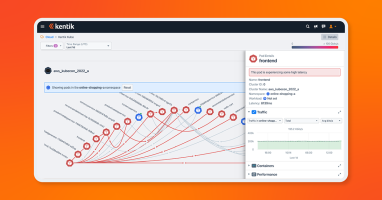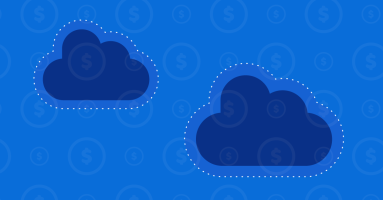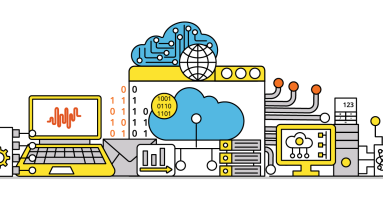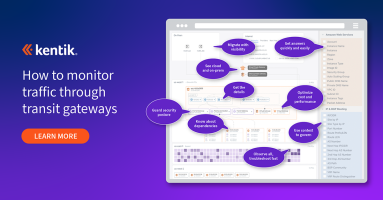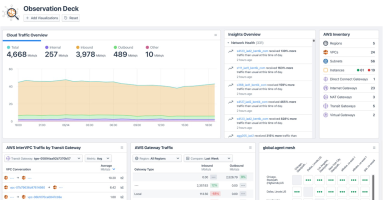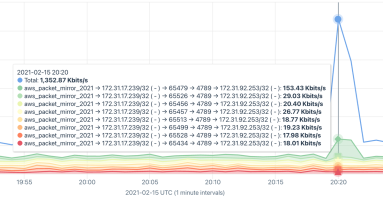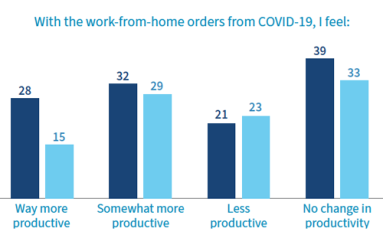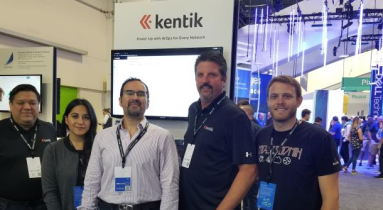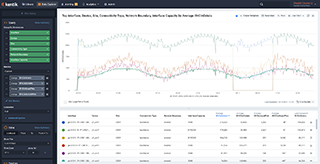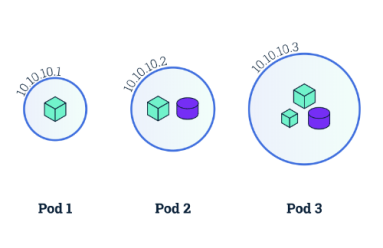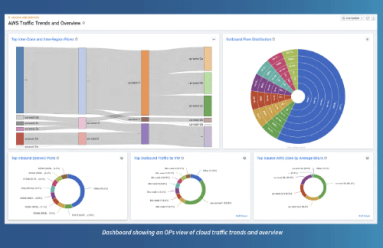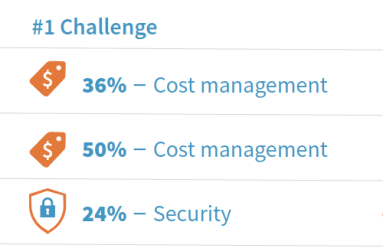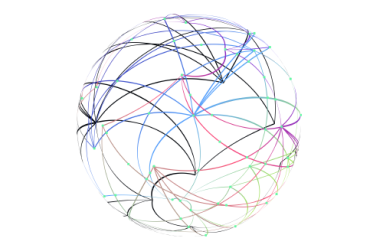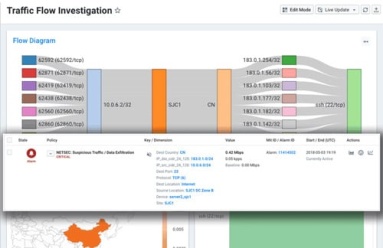Kentik Blog: Cloud Networks
























Cloud Pathfinder simplifies cloud troubleshooting by visually mapping connectivity paths between cloud endpoints and integrating the power of AI, identifying where and why traffic is being blocked. By analyzing cloud configuration metadata, it provides instant, actionable insights into routing and security issues — saving engineers hours of manual work.
AWS NAT Gateways are essential for private subnet access but can quickly become a costly burden, even when idle. With Kentik, cloud and network engineers gain deep visibility into NAT Gateway traffic, allowing them to identify underutilized gateways, analyze high-cost usage, and explore cost-saving alternatives like VPC Endpoints, Internet Gateways, or direct peering. By optimizing traffic routing and eliminating unnecessary NAT Gateway expenses, teams can significantly reduce cloud networking costs while improving efficiency.
Cloud networking costs can escalate due to inefficient routing and limited visibility. Kentik’s cloud visibility and analytics solution helps engineers optimize transit, reduce costs, and improve performance by analyzing AWS Transit Gateways and exploring alternatives like direct peering, storage endpoints, and AWS CloudWAN.
Azure VNet flow logs significantly improve network observability in Azure. Compared to NSG flow logs, VNet flow logs provide broader traffic visibility, enhanced encryption status monitoring, and simplified logging at the virtual network level enabling advanced traffic analysis and a more comprehensive solution for modern cloud network management.
AWS VPC flow Logs and Azure NSG flow Logs offer network traffic visibility with different scopes and formats, but both are essential for multi-cloud network management and security. Unified network observability solutions analyze both in one place to provide comprehensive insights across clouds.
In today’s multi-cloud landscape, maintaining smooth and reliable connectivity requires complete visibility into cloud networks. With Kentik, network and cloud engineers gain the tools to monitor, visualize, and optimize Azure traffic flows, from ExpressRoute circuits to application performance, ensuring efficient and proactive operations.
Balancing cost, performance, and security in cloud infrastructure is challenging, but cloud-mature companies are proving it’s possible to optimize without compromise — here’s how they do it.
Kentik Data Explorer is a powerful tool designed for engineers managing complex environments. It provides comprehensive visibility across various cloud platforms by ingesting and enriching telemetry data from sources like AWS, Google Cloud, and Azure, and with the ability to explore data through granular filters and dimensions, engineers can quickly analyze cloud performance, detect security threats, and control costs in real-time exploration and historically.
In today’s complex cloud environments, traditional network visibility tools fail to provide the necessary context to understand and troubleshoot application performance issues. In this post, we delve into how network observability bridges this gap by combining diverse telemetry data and enriching it with contextual information.
In this post, we look at optimizing cloud network routing to avoid suboptimal paths that increase latency, round-trip times, or costs. To mitigate this, we can adjust routing policies, strategically distributing resources, AWS Direct Connects, and by leveraging observability tools to monitor performance and costs, enabling informed decisions that balance performance with budget.
In this post, explore the challenges of diagnosing network traffic blockages in AWS due to the complex and dynamic nature of cloud networks. Learn how Kentik addresses these issues by integrating AWS flow data, metrics, and security policies into a single view, allowing engineers to quickly identify the source of blockages enhancing visibility and speeding up the resolution process.
AWS Transit Gateway costs are multifaceted and can get out of control quickly. In this post, discover how Kentik can help you understand and control the network traffic driving AWS Transit Gateway costs. Learn how Kentik can help you understand traffic patterns, optimize data flows, and keep your Transit Gateway costs in check.
While CloudWatch offers basic monitoring and log aggregation, it lacks the contextual depth, multi-cloud integration, and cost efficiency required by modern IT operations. In this post, learn how Kentik delivers more detailed insights, faster queries, and more cost-effective coverage across various cloud and on-premises resources.
Today, 84% of enterprises have reportedly embraced a multi-cloud strategy, lured in by the promise of improved agility, resilience, and innovation. But that multi-cloud adoption comes with challenges. Read on to learn more about how a multi-cloud strategy paired with observability can simplify that complexity.
Are you considering the switch from network engineer to cloud engineer? This post won’t teach you everything needed to become a cloud expert, but hopefully, it will create a level of comfort and familiarity such that you can start your journey to the cloud from here.
Migrating to public clouds initially promised cost savings, but effective management now requires a strategic approach to monitoring traffic. Kentik provides comprehensive visibility across multi-cloud environments, enabling detailed traffic analysis and custom billing reports to optimize cloud spending and make informed decisions.
Multi-cloud visibility is a challenge for most IT teams. It requires diverse telemetry and robust network observability to see your application traffic over networks you own, and networks you don’t. Kentik unifies telemetry from multiple cloud providers and the public internet into one place to give IT teams the ability to monitor and troubleshoot application performance across AWS, Azure, Google, and Oracle clouds, along with the public internet, for real-time and historical data analysis.
Cloud costs are spiraling out of control at companies of all sizes. Here’s how to not let your cloud infrastructure costs handcuff your business.
Hybrid cloud environments, combining on-premises resources and public cloud, are essential for competitive, agile, and scalable modern networks. However, they bring the challenge of observability, requiring a comprehensive monitoring solution to understand network traffic across different platforms. Kentik provides a unified platform that offers end-to-end visibility, crucial for maintaining high-performing and reliable hybrid cloud infrastructures.
Today’s evolving digital landscape requires both hybrid cloud and multi-cloud strategies to drive efficiency, innovation, and scalability. But this means more complexity and a unique set of challenges for network and cloud engineers, particularly when it comes to managing and gaining visibility across these environments.
From infrastructure and chipsets to data solutions and development tools, it’s clear that artificial intelligence will play a massive role in the future of the cloud. Read Justin Ryburn’s latest recap to learn about many of the exciting unveilings at Google Cloud Next 2024.
Despite the siren song of AI in the keynotes, visitors were far more focused on solving real-world problems. These are the issues that have plagued IT practitioners for years, if not decades: troubleshooting and validating performance and availability of their applications, services, and infrastructure.
Kentik now provides network insight into Oracle Cloud Infrastructure (OCI) workloads, allowing customers to map, query, and visualize OCI, hybrid, and multi-cloud traffic and performance.
Kentik Kube provides network insight into Kubernetes workloads, revealing K8s traffic routes through an organization’s data centers, clouds, and the internet.
CloudWatch can be a great start for monitoring your AWS environments, but it has some limitations in terms of granularity, customization, alerting, and integration with third-party tools. In this article, learn all the ways that Kentik can supercharge your AWS performance monitoring and improve visibility.
Businesses are rapidly transitioning to the cloud, making effective cloud cost management vital. This article discusses best practices that you can use to help reduce cloud costs.
Tools and partners can make or break the cloud migration process. Read how Box used Kentik to make their Google Cloud migration successful.
In this post, Phil Gervasi uses the power of Kentik’s data-driven network observability platform to visualize network traffic moving globally among public cloud providers and then perform a forensic analysis after a major security incident.
The scalability, flexibility, and cost-effectiveness of cloud-based applications are well known, but they’re not immune to performance issues. We’ve got some of the best practices for ensuring effective application performance in the cloud.
Kentik customers can now map traffic and performance of Microsoft Azure infrastructure with visibility into Azure Firewalls, Express Routes, Load Balancers, VWANs, and more in Kentik Cloud.
Limited visibility into network performance across multi-clouds frustrates even the best teams. That’s why we’re thrilled to announce enhanced AWS and GCP support for Kentik Cloud, enabling network, cloud, and infrastructure teams to rapidly troubleshoot and understand multi-cloud traffic.
Cloud network reliability has become a catch-all for four related concerns: availability, resiliency, durability, and security. In this post, we’ll discuss why NetOps plays an integral role in delivering on the promise of reliability.
Virtual Private Cloud (VPC) flow logs are essential for monitoring and troubleshooting network traffic in an AWS environment. In this article, we’ll guide you through the process of writing AWS flow logs to an S3 bucket.
True observability requires visibility into both the application and network layers. For companies reliant on multi-zonal cloud networks, the days of NetOps existing as a team siloed away from application developers are over.
Delivering on network reliability causes an enterprise’s data to become more distributed, introducing advanced challenges like complexity and data gravity for network engineers and operators. Learn concrete steps on how to implement cloud reliability and the trade-offs that come with it.
In the final entry of the Data Gravity series, Ted Turner outlines concrete examples of how network observability solves complex issues for scaling enterprises.
Cloud networks introduce a multitude of costs that can become challenging to predict. Learn how to implement a cost-aware infrastructure through maximum visibility in cloud networking.
In the second of our data gravity series, Ted Turner examines how enterprises can address cost, performance, and reliability and help the data in their networks achieve escape velocity.
With data sets reaching record scale, it is more important than ever for network operators to understand how data gravity is impacting their bottom line and other critical factors. Learn how network observability is essential for managing data gravity.
In this blog, we discuss how Kubernetes approaches networking, the gaps in networking from Kubernetes, and how Kubernetes service meshes address those gaps.
Kubernetes is a powerful platform for large-scale distributed systems, but out of the box, it doesn’t address all the needs of complex enterprise systems deployed across multiple clouds and private data centers. Service meshes fill that gap by connecting multiple clusters into a cohesive mesh.
In today’s digital landscape, application demands such as scalability, performance, and reliability push many IT organizations toward cloud-based networks. Learn what the best cloud solution for your enterprise needs is.
To fully capitalize on the promises of digital transformation, IT leaders have come to recognize that a mix of cloud and data center infrastructure provides several business advantages. Read on to learn how an observable network leads to a better customer experience.
Getting the most out of cloud networks requires new tools and strategies, captured in the idea of network observability. Read the final entry in our series on managing the hidden costs of cloud networking.
When transitioning from physical infrastructure to the cloud, it’s easy to think that your networks will instantly be faster, more reliable, and less costly overnight. As it turns out, there’s more to it than that.
For organizations of all types and sizes, hybrid cloud environments pose a substantial challenge. In our new article, we learn about the five biggest issues that NetOps teams face in the cloud.
The final installment of our three-part series explaining the process of using continuous synthetic testing as a comprehensive cloud monitoring solution to find problems before they start.
The second of a three-part guide series explaining the process of using continuous synthetic testing as a comprehensive cloud monitoring solution to find problems before they start.
The first in a three-part guide series explaining the process of using continuous synthetic testing as a comprehensive cloud monitoring solution to find problems before they start.
We’re fresh off KubeCon NA, where we showcased our new Kubernetes observability product, Kentik Kube, to the hordes of cloud native architecture enthusiasts. Learn about how deep visibility into container networking across clusters and clouds is the future of k8s networking.
Companies considering cloud adoption should ensure that they take these valuable lessons into account to avoid hidden cloud costs.
We’re excited to announce our beta launch of Kentik Kube, an industry-first solution that reveals how K8s traffic routes through an organization’s data center, cloud, and the internet.
Cloud architectures and their managed infrastructures keep personnel and networking costs down while promoting high-velocity software development, but there are hidden costs. Read the first post in our series on managing the hidden costs of cloud networking.
A company with thousands of remote employees connecting to the same SaaS applications will randomly experience slowness. How can we troubleshoot this sluggishness?
How do you pinpoint latency problems between systems in a hybrid or multi-cloud environment? It requires insight into the complete path, end-to-end, hop-by-hop.
Maximize your network’s performance with a reliable packet loss monitor. Learn how to proactively identify lost data packets and latency within the cloud.
In this post, we offer insight into how to monitor traffic through transit gateways by understanding routing dynamics and cloud architecture. Learn more.
Networking in the cloud can be like a black box. In this blog we discuss five essential properties of network observability for cloud, giving you the ability to answer any question about your cloud network.
With increasingly complex on-premises and cloud hybrid environments, managing the network has never been so tough. And that keeps network pros up at night.
AWS announced support for VPC Traffic Mirroring to additional AWS instance types. The Kentik Network Observability Platform provides visibility and insights into AWS mirrored traffic.
Today we published a report on “The New Normals of Network Operations in 2020.” Based on a survey of 220 networking professionals, our report aims to better understand the challenges this community faces personally and professionally as more companies and individuals taking their worlds almost entirely online.
Kentik’s Jim Meehan and Crystal Li share their insights from VMworld 2019, with a focus on news from the worlds of networking, multi-cloud, Kubernetes and security.
Kentik explains the advantage that streaming telemetry (also known as streaming network telemetry) brings to network analytics and our approach to leveraging streaming telemetry for maximum value.
The most commonly used network monitoring tools in enterprises were created specifically to handle only the most basic faults with traditional network devices. CTO Jonah Kowall explains why these tools don’t scale to meet today’s network visibility needs, why more enterprises are moving from faults & packets to flow, and how Kentik can help.
Kentik CTO, Jonah Kowall, explains the challenges inherent in ensuring visibility in the age of network overlays, plugins, and public clouds… and how Kentik addresses Kubernetes and other overlay technologies.
Kentik’s Aaron Kagawa explains why today’s network analytics solutions require new types of contextual data and introduces the concept of Universal Data Records. Learn how and why Kentik is moving beyond network flow data.
Learn how to maintain multi-cloud visibility within hybrid and multi-cloud architectures, as well as the requirements for modern cloud monitoring tools.
As enterprises integrate their networks with their public cloud strategies, several best practices for network teams are emerging. In this guest blog post, Enterprise Management Associates analyst Shamus McGillicuddy dives into his recent cloud networking research to discuss several strategies that can improve the chances of a successful cloud networking initiative.
In this blog post, we provide a starting point for understanding the networking model behind Kubernetes and how to make Kubernetes networking simpler and more efficient.
Building a cloud application is like building a house. If you don’t at least acknowledge the industry’s best practices, it may all come tumbling down. Here we look at AWS’ Well-Architected Framework as a good starting point for building effective cloud applications and outline why having the right tools in place can make all the difference.
Today we released a new report: “AWS Cloud Adoption, Visibility & Management.” The report compiles an analysis based on a survey of 310 executive and technical-level attendees at the recent AWS user conference. Simply put, we found: It’s a multi-cloud, cost-containment world.
There are five network-related cloud deployment mistakes that you might not be aware of, but that can negate the cloud benefits you’re hoping to achieve. In this post, we provide an overview of each mistake and a guide for avoiding them all.
If you work in this industry, chances are you use dashboards. But how do you build an effective dashboard that goes beyond pretty graphs and actually provides insight? In this post, we offer key principles for dashboard creation and share how we build them at Kentik, with examples of our dashboards for cloud monitoring.
At recent AWS re:Invent, we heard many attendees talking about the push for cloud-native to foster innovation and speed up development. In this post, we take a deeper dive on what it means to be cloud-native, as well as the challenges and how to overcome them.
Our network analytics platform supports visibility within public cloud environments via VPC Flow Logs. Our initial integration used VPC Flow Logs from Google Cloud Platform. Today, we are excited to extend our support to AWS. Read how we do it in this blog post.
Cloud providers take away the huge overhead of building, maintaining, and upgrading physical infrastructure. However, many system operators, including NetOps, SREs, and SecOps teams, are facing a huge visibility challenge. Here we talk about how VPC flow logs can help.
To some, moving to the cloud is like a trick. But to others, it’s a real treat. So in the spirit of Halloween, here’s a blog post to break down two of the spookiest (or at least the most common) cloud myths we’ve heard of late.
VPC Flow Logs Blog Post: The migration of applications from traditional data centers to cloud infrastructure is well underway. In this post, we discuss Kentik’s new product expansion to support Google’s VPC Flow Logs.



















